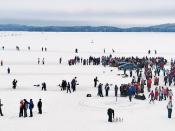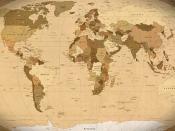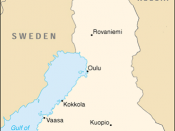Finland (Finnish name Suomi) is a republic and is situated in northern of Europe between the 60th and 70th parallels of latitude. The population of Finland is 5.2 million people and it is the sixth largest country in area in Europe (CIA The World Factbook). The Finns have had a lot of history of internal and external migration in which their population has both increased one year and decreased the next.
In 1155 Finland became a part of the Swedish realm as the first missionaries arrived. During the early 1800's Sweden surrenders Finland to Russia (Nationmaster). Then in 1917 Finland declares independence from Russia and a constitution is adopted and Finland becomes a republic with a president as head of state. In 1995 Finland became a member of the European Union (CIA The World Factbook).
Finland's population growth has been among the lowest in the world. Finland's average population density is fourteen people per square mile, which is the second lowest in Western Europe.
A great number of Finns immigrated to Sweden after the World War II because of the country's prosperity and proximity. Immigration was very slow and then during the 1960s and 1970s, tens of thousands left Finland for their western neighbor, Sweden, to get better paying jobs. In 1970, 41,000 Finns settled in Sweden which caused Finland's population to actually fall. It is estimated that over the post war years that in total 250,000 to 300,000 Finns became permanent residents of Sweden (Statistics Finland). By the 1980s Finland's economy brought and end to the large-scale migration to Sweden and started to reverse the process in which the overall population grew with the returning Finns from Sweden.
The internal migration in Finland was more significant to the history of the Finn's. In 1917 Finland received its...



Timeline rip off
It's informative but just sounds like you have done a cut and paste job from a bad timeline.
1 out of 1 people found this comment useful.